10 Super-Effective Data Collection Methods to Know About
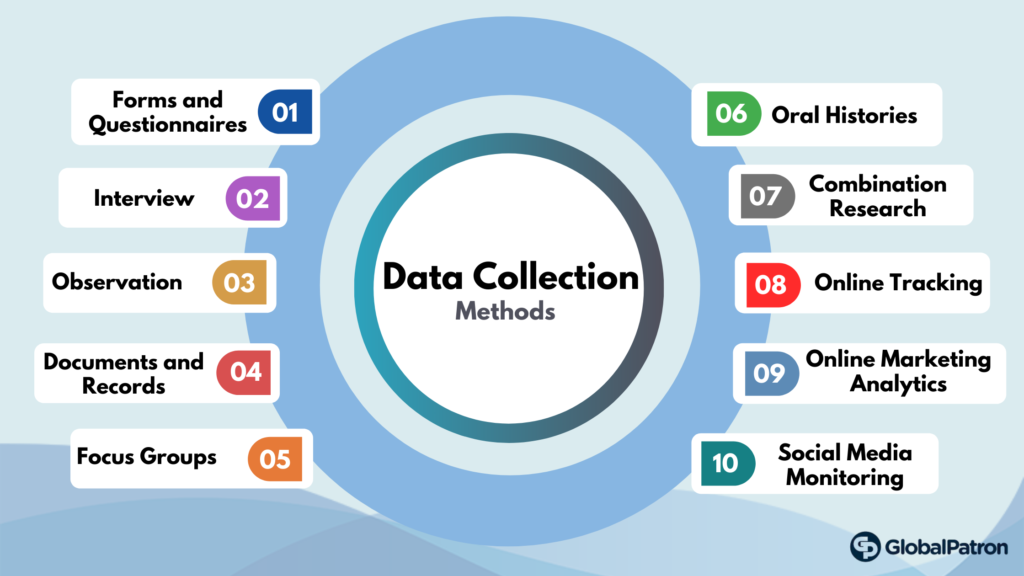
We live in an era that is heavily influenced by data. Every business organization is dependent on insightful stories conveyed by data to take decisions that are imperative for organizational growth. Well, if that didn’t sink in, here are a few questions for you:
Do you want to improve customer experience?
Ever wondered why your competitors are performing better?
Want to introduce a new feature in your product?
Do you need a smarter/faster way of reaching a conclusion?
If the answer is a yes to any of the above, then data collection is the path.
Every organisation can be made more successful and more efficient by making use of insights acquired through data collection.
When you have the right data in hand and the right tools to process and analyse that data, you can turn that data into information, and make more informed and educated decisions based on that information. The data collected however should be relevant, precise, and taken in context, or else it can be misleading, which can have a negative impact on a business. For this reason it is prudent to initially treat your conclusions reached through data collection as hypotheses rather than statements of fact, and to take action in small incremental steps rather than making sweeping changes or big decisions in one go.
In this article we will be discussing the 10 best data collection methods that can help you obtain the right data effectively, as well as some real-life examples of effective data collection in practice. Before delving into data collection methods, let's first briefly cover the basics of data collection. If you already know the theory, feel free to just skip straight to the section on real-life examples of effective data collection.
What is Data Collection?
Data collection is the process of gathering and measuring information from various sources, in a way that enables you to find answers to real questions, and to gain new insights that would not otherwise be immediately obvious – for example the accurate assessment of collected data can help you analyze current trends and even predict future trends.
Why Should You Collect Data?
By now, you would already have a general idea of data collection, but are you convinced enough to employ it yet?
If not, let’s briefly go through some of the advantages and uses of data collection:
- It helps you focus your limited energy and resources on the pieces that have the most impact.
- It aids you in understanding your customers better.
- It helps you analyze trends better, as to how customer opinions and behaviour change over time.
- You can make quicker, more effective decisions based on the data collected.
- It enables you to segment audiences and curate dedicated marketing strategies for each segment.
- Feedback data let’s you resolve issues and to improve your product/services where its most needed.
- It helps improve customer relationships.
What are the Different Types of Data Collection?
When it comes to data collection there are quite a few useful methods. Before delving into the data collection methods, there’s something you need to know. Data Collection essentially falls under two main categories: Primary data collection and Secondary data Collection.
Primary Data Collection
Primary data collection is the act of gathering raw data collected for a specific research. Primary data collection methods can be further divided into two:
1. Qualitative Research Method
The qualitative research method basically depends on the non – calculable elements like the emotions, opinions and feelings. This method does not involve any numbers or calculations whatsoever. A fine example of a qualitative data collection method would be open-ended feedback like a survey form you send out to customers.
2. Quantitative Method
As opposed to qualitative methods of data collection, quantitative method depends on numbers and mathematical calculations to help you arrive at a conclusion. Any close-ended question that demands calculated answers, like the ones involving mean, median, mode etc. A classic example of this type of data collection is polls. You're mainly interested in the numbers they produce to reach your conclusions/decisions.
Secondary Data Collection
In simple words, Secondary data collection takes place when you collect data from a secondary source rather than from the original one. This kind of data can be sourced from online portals, books and journals that have been already published. It is often the easier and cheaper method when compared to primary data collection.
10 Effective Data Collection Methods
Now that you know the different categories of data collection, let’s move to the crux of our article, the top 10 data collection methods.
1. Forms and Questionnaires

This is by far one of the most sought after methods of primary data collection, primarily because it's so easy, customizable, and powerful, and allows secure data collection from a wide user base with little effort. This method of data collection improves accuracy of data to a great extent because the data is "structured" by default. Such a data collection method can be used to procure answers for close-ended questions quite efficiently, and can generate a lot of information and leads if designed properly.
You need to carefully plan out the questions. Make sure you include relevant, short questions in your forms that can be easily understood by your audience. If not, chances are that your audience might feel disengaged and eventually opt out from responding. So, if response rates and valuable information is what you want make sure you have an engaging, relevant data collection form.
If you are dealing with a large audience, then electronic forms and questionnaires become a necessity rather than a nice-to-have. You will be able to collect definitive data from a large audience in a matter of minutes and at low expense, for example by displaying the form on a high-traffic website, or linking to it in a large email campaign. Most software platforms that host data collection forms have advanced features like auto-scaling in-built so if you have a sudden spike in traffic it doesn't matter at all and your forms will still continue to collect data.
In the past this method of data collection was only available to large companies as it was very expensive and time consuming to hire software engineers to code and test the forms, however today *anybody* can make use of advanced online data collection tools like form builders to build and design their own electronic data collection forms themselves. Most of these tools offer an enormous amount of power and functionality that does not require any coding knowledge at all. Many also support 'Offline' mode with a mobile app, so that you can continue to collect data in scenarios where your staff are in remote locations where internet connectivity is not reliable. Feel free to try out building your own data collection form now.
Since the data is being collected in electronic format this means that its also possible to easily move that data into other systems, and to automate that process, for example the data can flow into your CRM or email marketing system.
Further down in this article, in the section on real life examples of effective data collection, you will be able to see how others in the industry are using forms and questionnaires to effectively collect data and realise genuine value for their organisations with little effort.
2. Interview

Interview is yet another data collection method used to gather crucial information. It can be conducted in person, through a phone call or web chat.
Open ended questions are more often asked in interviews. Here too, you need to be aware of the questions to be asked and shouldn’t compromise with the quality and efficiency. Interviews can be an expensive method of data collection and you should not leave room for errors.
The customizability of interviews is one benefit that the interviewer has. He/she can ask follow-up questions that pertain to the previous answers as the information exchange takes place in real time.
3. Observation

When it comes to observation, there are minimal questions involved. The information gathered by the researcher can also be based on the judgements they make of the observation yet it needn’t be biased always.
Observation helps you make a note of the changes that happen in real time which is not always possible with other methods. For instance, you can observe how the mood of your audience changes in real time.
Observation is one of the key data collection methods used to form a hypothesis. It is not viable always as it depends on the situation and biased results can be expected.
4. Documents and Records

Documents and Records based data collection makes use of existing data for gathering information.
This is a secondary data collection method where you don’t have to spend time researching on your own as a major part of the research has been recorded.
You don’t have to curate a list of questions as there is no such demand. Financial and attendance records are an example of this method.
Relying on documents and Records is also one of the most cost-effective data collection methods though not as efficient as it’s counterparts.
5. Focus Groups

Focus Groups fall in the qualitative data collection category. This kind of research involves a group of individuals that provides feedback and answers to the open-ended questions asked to them. Focus groups can be seen as a combination of interviews, surveys and observation.
The main objective of such a data collection method is to gather collective opinions rather than individual ones.
The organizer can ask open ended questions like ‘What was your favourite feature of the product’ or similar questions. The group discusses among themselves and puts forward a shared opinion.
6. Oral Histories

As its name suggests, oral history can be defined as the collection, preservation and interpretation of historical data that were based on the experiences and thoughts of people who were part of the particular event. Oral histories are mainly based on a single phenomenon or event.
7. Combination Research

Coming under the primary data collection category, combination research is a blend of both focus groups and interviews. The main objective of such a method is to improve participation so that data about sensitive topics can be gathered without much difficulty.
Combination research protects the anonymity of the respondents allowing them to give accurate unbiased information, that enhances the richness of the data.
The only drawback of this data collection method would be that it is time consuming.
8. Online Tracking
Did you know that 40 different data points are covered when someone visits a page on your website? Yes, they do and that is why online tracking can be one of the best data collection methods for website owners.
The website hosting provider or even an analytics software can act as your data collection tool here and help you collect information about both customers and prospects alike.
You can also use tracking pixels and cookies to further track the activities of your website visitor over the course of numerous sessions.
9. Online Marketing Analytics
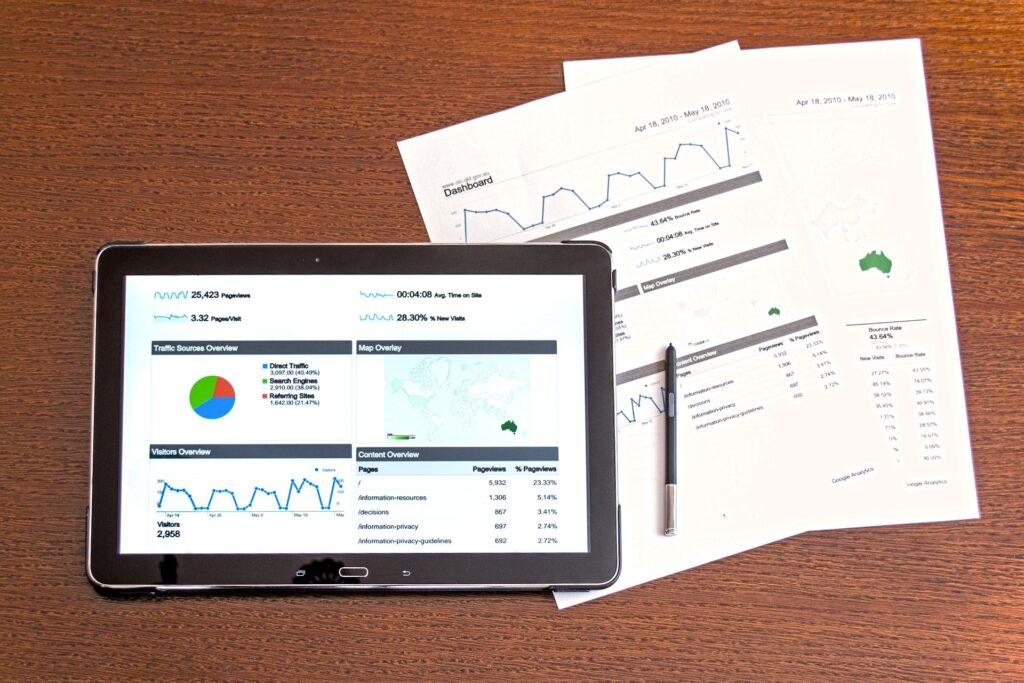
Marketing Campaigns can also be an excellent method for collecting data. Let us explain how.
You will be able to collect valuable information from the marketing campaigns run through webpages, social media, emails etc. The software that you use to place the ads in various destinations can help you collect data.
The tool can tell you who clicked on your ad, how many clicked, how many times was it clicked, from what device was it clicked, from which region you procured the maximum clicks and so on.
Data can be collected even from offline marketing campaigns as well. For example an advertisement on the side of a bus can have a particular phone number or short URL advertised which is specific to that offline campaign, this way your sales team knows exactly where they originated from.
10. Social Media Monitoring

Today, every business has its presence in social media. Social media platforms are not just for brand building alone but for collecting reliable customer data as well.
You can get vital data from various aspects of social media. For instance, you can measure the engagement of your customers with your posts through the number of impressions, likes, shares and comments.
You can analyze the activities of your followers, how they respond to your page in social media and even segment them accordingly.
You can either make use of the social media platform for analytics on the performance of your posts or employ a social media management software to act as your data collection tool in this context.
Real-Life Examples of Effective Data Collection In Practice
Here are several practical/real-life examples of effective data collection where the theory is being put into practice.
Personalizing the data collection process for higher completion rates
The more personalised the data collecton process is, the more likely that users will feel engaged and keep going. A simple but effective means of personalisation is by using the users answers to previous questions on the data collection form.
For example instead of asking "How happy were you with the quality of the product?", you could instead ask:
"[James], how happy were you with the quality of the [sales training handbook]?"
The personalised version is far more personal (no surprise there!), and therefore more effective.
Below is a screenshot showing how to do this kind of personalisation in your data collection forms using a feature called "Label Variables", (AKA "Answer Piping"). Here we simply drag a label variable anywhere we would like an answer to a previous question to be displayed on the data collection form. Feel free to Try it out yourself
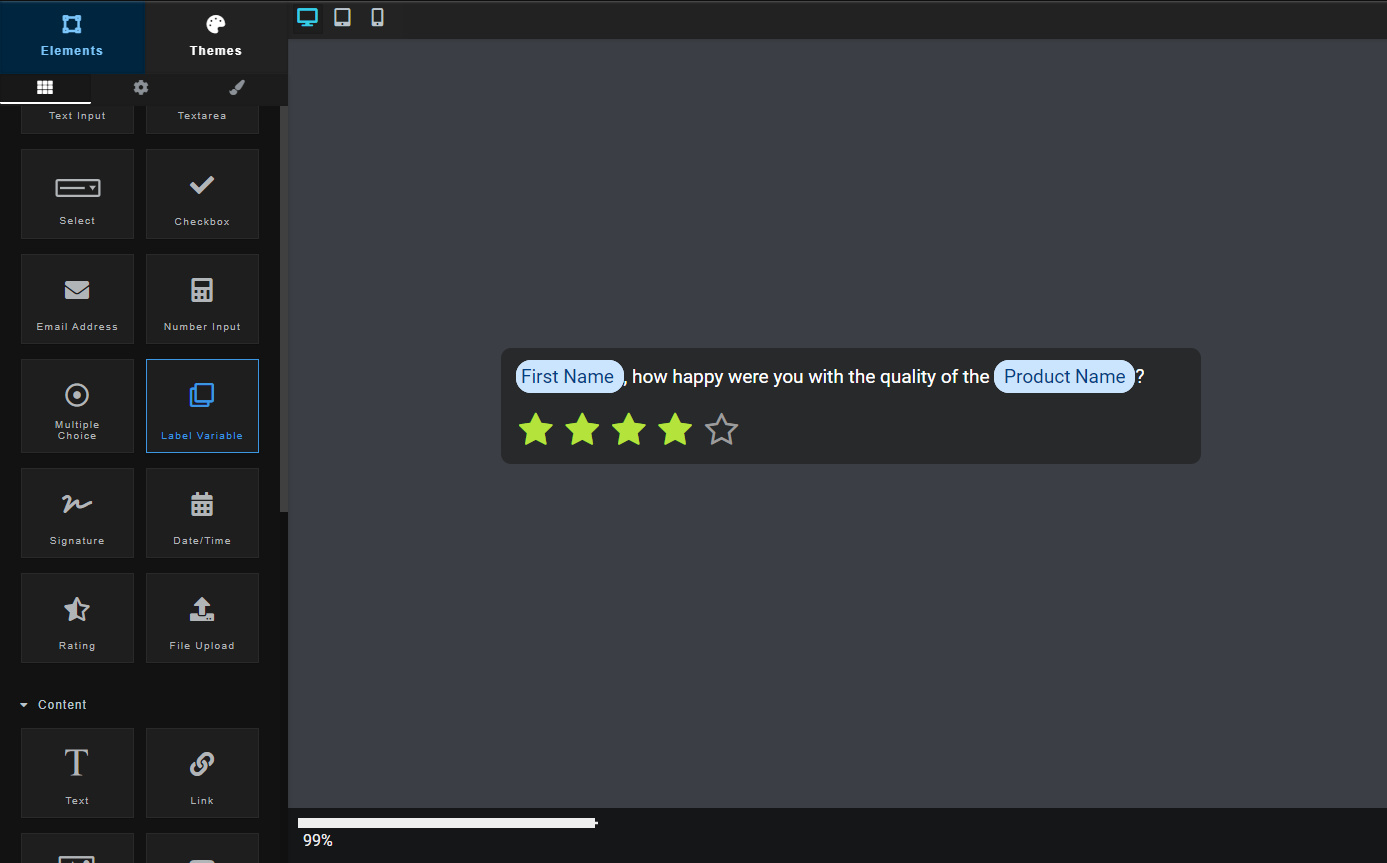
Tools nowadays are so powerful that you can do some pretty advanced personalisation during the data collection process, without requiring coding knowledge. For example you could also have a blog on your website that mentions your product vs a competitors product to draw more organic traffic towards your site. Visitors to that blog article are obviously also interested in the competitors product, so when you link to your data collection form on that particular blog article you can include something in the URL to let your form know "this user is also interested in product X", and show them additional content dynamically based on that information.
Below for instance we could show the customer different text in the heading "So yeah, we tried [Product Name]", and even show a different video, based on the fact that we knew they arrived from a particular web page:
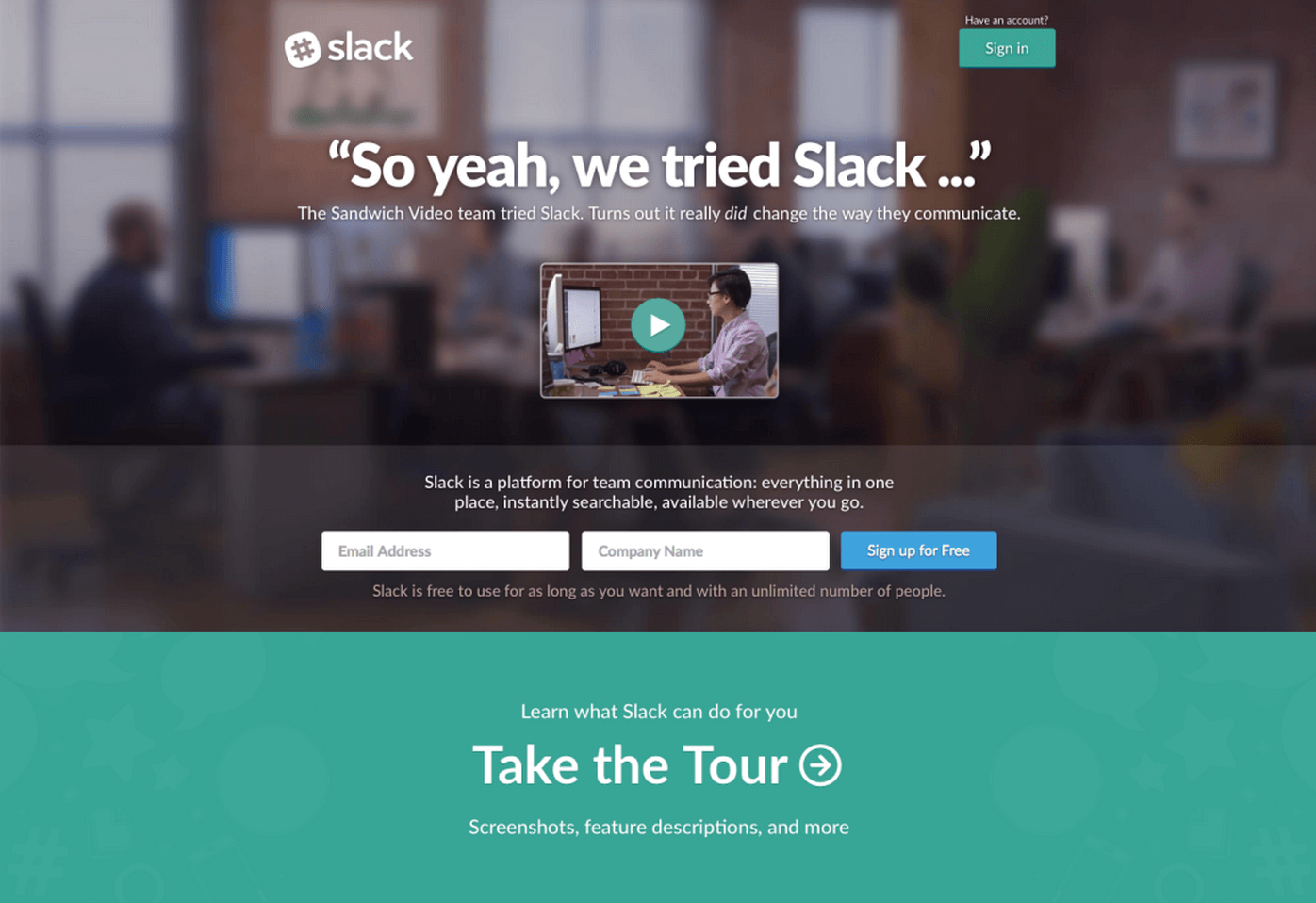
This is made possible using a feature called URL based field pre-population. Here's the detailed steps on how to do it yourself.
Effectively reducing incidences of exaggeration or lying when collecting data
Did you know that many individuals still lie even into adulthood? Well, gues what? They also lie when filling out your forms. Sometimes it's just carelessness or laziness on their part, sometimes it's more sinister.
According to Adzuna, a job portal based in the UK, 37% of job hunters are prepared to tell lies to somehow get the job. Of these liar applications, 83% of them successfully landed the job, and 43% acknowledged that their lie was a likely factor that helped them to secure the job. How annoying is that?
A more suitably qualified applicant who is honest but is getting one-upped by a less suitably qualified liar is an ethical problem in itself, however allowing the liar or exaggerator to unfairly win a role can have lasting damaging effects on the company they've joined, this is especially more pronounced in senior or technical roles where underskilled employees can cause immense damage or commercial loss for their employers over the years.
Below is a job application for a senior technical role. If the applicant has claimed to be an "expert" in a particular skill, a follow up question appears right after it asking them if they are prepared to sit an exam to prove it. You may not have any exam, but simply having that question of whether they are "prepared to sit a timed exam" will strongly discourage applicants from exaggerating their actual knowledge out of fear of being found out. You will find that the presence of the follow-up question will cause applicants to backtrack and re-think their answer to the previous question about "Level of expertise".
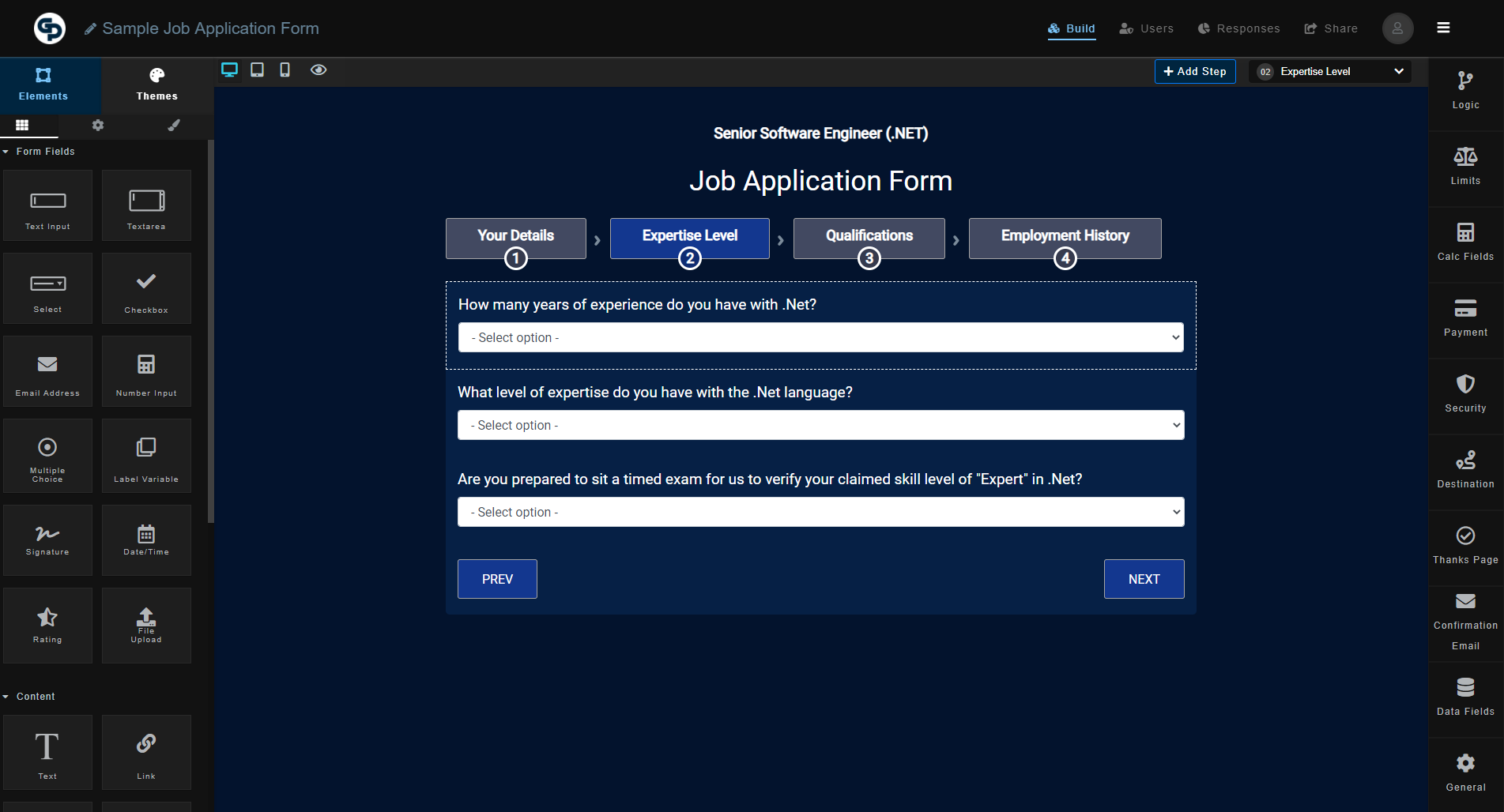
This is made possible using a feature called "Conditional Logic". Here's the detailed steps on how to do it yourself.
Using the data you already have to derive business value
More often than not, businesses have a tonne of data already at hand and accessible, or sitting unused in a server log, but if they simply expose that information to a business user, it magically turns into gold in terms of business value.
A question to ask yourself is, what piece of data do you already have access to? or could easily collect? or are already collecting but not exposing to the business?
Here's a classic example, most businesses have a searchable "help" section which is often just treated as a place to "display information to customers". It's certainly not thought of as somewhere that you would derive any business value whatsoever, but even here there is very valuable data being collected which does indeed provide valuable insights that benefit your business.
In this example the piece of data that we already have is "What did people search for in the help section, which led to no search results being returned?"
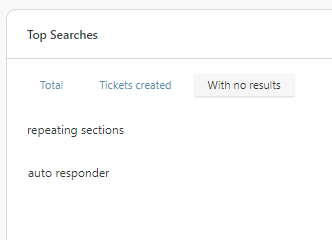
For example from the above data I can already see that we need to make sure to add a help article on how to setup auto-responder emails, because people can't find it atm, I can also see that people are interested in "repeating sections", so we should probably allocate some more time to releasing that feature to production because people are looking for that feature and it doesn't exist yet.
So if you already have a treasure trove of existing unused data (like the data in your Google Analytics account, or your email marketing account, or your support platform, etc), stop reading this article and go back there to see what opportunities you're missing from the data you already had all along.
Effectively associating structured data with unstructured data
When you collect data, especially if there are large quantities of it, in order for it to be most useful it needs to be "structured". What this means is that the data should be placed into a logical structure so that tools (and also people), can efficiently come to conclusions about the data.
For example if you have 500 PDF documents, this isn't particularly useful when it comes to the "analysis" part of the data collection process. But if you could record pieces of structured information alongside those PDF's you now suddenly have a very efficient way of filtering and searching through your data. One of the major advantages of using a forms platform like GlobalPatron as part of your data collection is exactly this, it by default aligns the data you collect into a structured format. For example a HR person collecting data (in this case PDF Resume's of Job applicants - which is "unstructured data"), also collects structured data alongside these PDF's such as "years of experience", and "education level". This way he can rapidly search and filter the applicants based on those two pieces of structured data, and only needs to open up the PDF of applicants that meet his filter criteria. This is a basic example but shows how important collecting structured data is.
In your data collection forms, you can treat your fields as "filters". For example below, the HR department has been tasked with searching for a top-grade freelance marketer, and in this scenario they were interested in sorting applicants based on how large their existing social reach was, so on the job application form they built they included these fields:
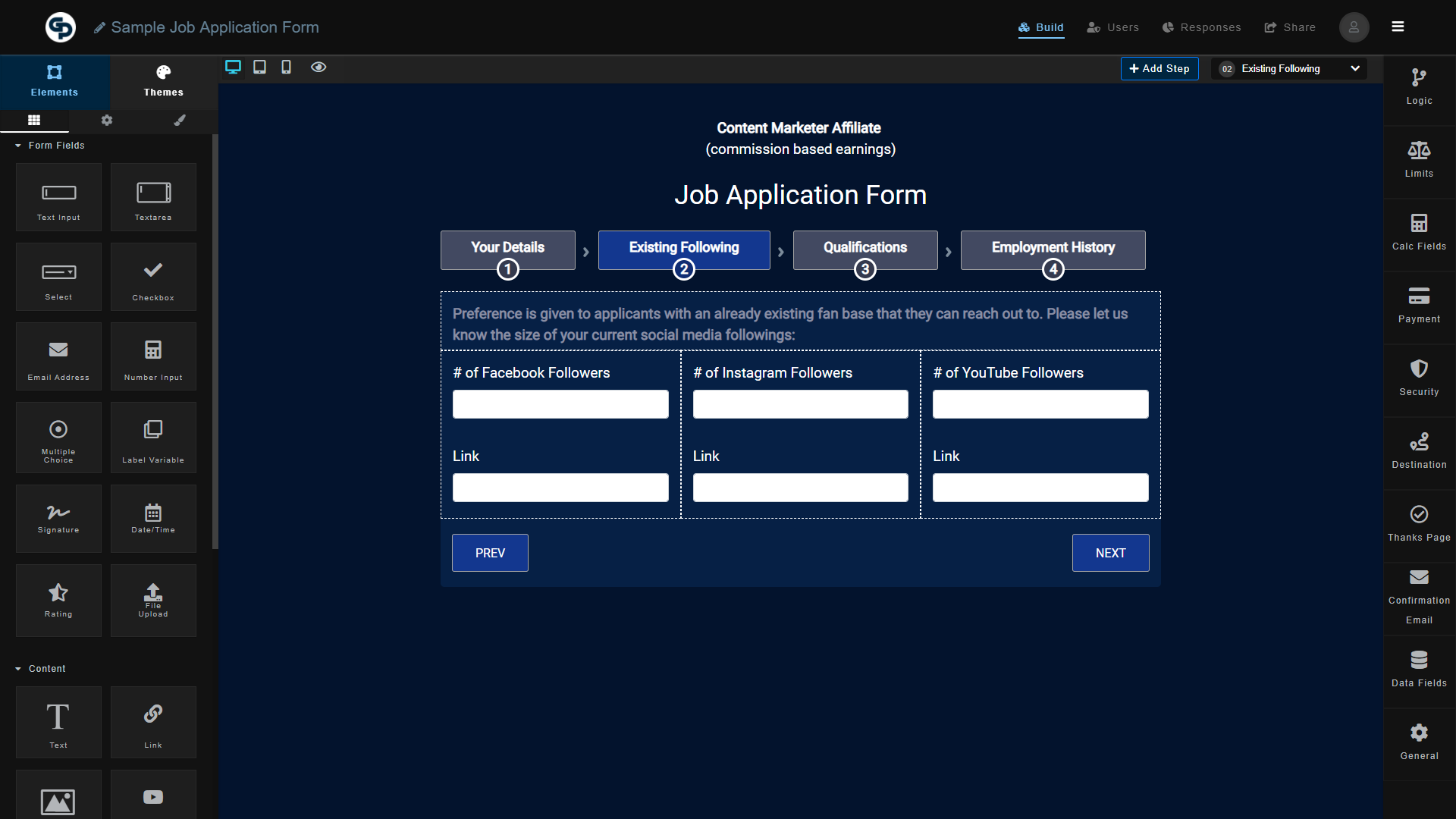
With this automated approach, HR could easily include a key filter (in this case the size of the applicants social reach) in their decision making process, and check only the resumes of the most desirable candidates. This effective method of filtering and sorting applicants can save an enormous number of business hours, so HR can use their valuable time to focus on other challenges of human resource management.
This is exactly what shopper.com did when they were on the lookout for a freelance content writer. Instead of posting an ad on a job board and getting a thousand PDF job applications, which are all in different formats, impossible to search through efficiently, and where many applicants are not even addressing the mandatory job skill requirements in their application - instead of that, they posted a link to a data collection form on those job boards, and were able to collect all of the filters they needed to be able to efficiently sort/filter/rank the applicants before opening up their resumes. See how they did it
Privacy & Trust
When working with any data, it is essential that you not breach the trust of your customers. Never disclose collected data to third parties, and never collect data without the customers consent. Doing so can expose your organisation to serious legal consequences and hefty fines. If you are collecting data from customers in an automated/discreet manner (e.g. by reviewing server activity logs), you must ensure that you have a privacy policy and comply with GDPR standards, as customers have a right to know what data you are collecting about them, and also have the right to request that you delete that data. GDPR compliance is too large a topic to be covered here, but all organisations involved in data collection would be advised to comply with its rules, even if they are not dealing with customers in Europe. See https://gdpr.eu/ for more information on what exactly the GDPR compliance requirements are.
Final Thoughts
Data collection is no more a once in a blue moon affair. Collecting data has become a necessity for all organisations that want to be able to make better informed decisions.
Collecting data lets you know what your customers think about your brand, points out the areas that can improve, helps generate leads, and lets you update your products and services as per the latest customer behaviour and trends.
If you are serious about your business or organisation and want to see it reach its goals more efficiently and effectively, then surely data collection and analysis should be on your list.
We hope this article was useful. So now you can choose the preferred methods for your organization, assign an efficient data collection software and get started!
Also, if you haven't yet used GlobalPatron's Universal Data Collection Platform, feel free to have a look, it will help you rapidly collect structured data for almost any scenario.